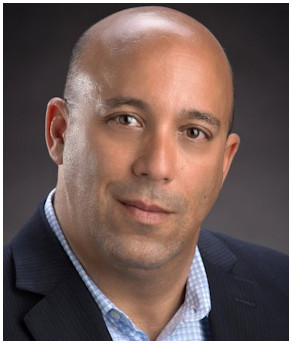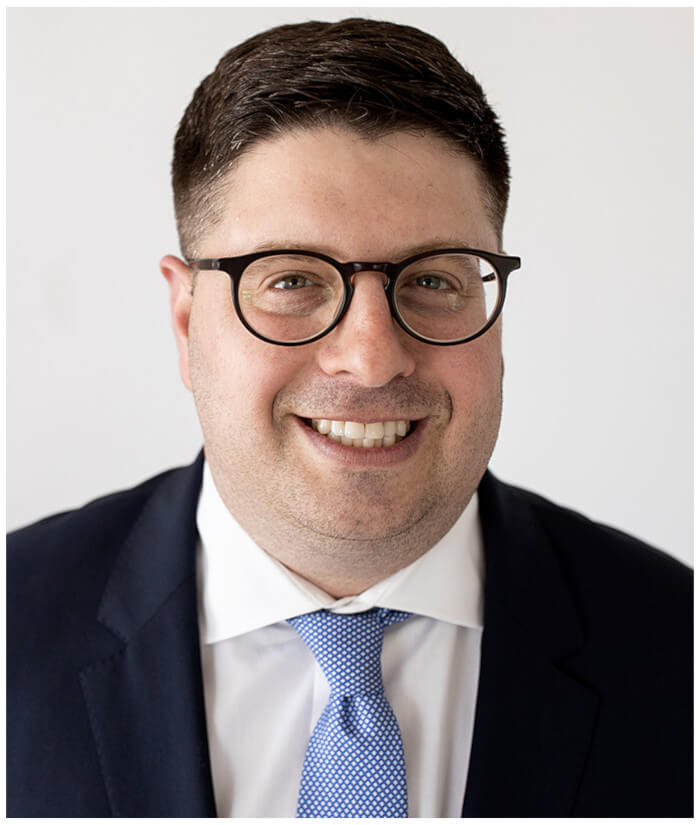Confidential Settlement - Death following Dialysis
Our Ohio Medical Malpractice Case – Summary
Lynn G was a 60-year-old woman with one adult child who died a few weeks after receiving dialysis at a dialysis center. The Eisen Law Firm was able to prove that the water used for dialysis was contaminated with bacteria that caused her death. A confidential settlement was reached with the various defendants, and the entire water filtration system was re-designed in order to reduce the risk of future contamination.
Our Ohio Medical Malpractice Case Facts
Lynn G died at a hospital in Ohio. Her death followed a five-week hospital stay that began when she was admitted through the emergency room with an acute bacterial illness. Mrs. G was one of more than a dozen individuals who became sick following dialysis treatment at a for-profit dialysis center in Ohio. Although most of the patients who became sick survived their illnesses, Mrs. G’s pre-existing medical conditions made it particularly difficult for her to recover from the infection.
Lynn G was a 60-year-old African American woman who was in chronic renal failure for nearly 20 years. Although the medical providers who cared for Mrs. G never specifically confirmed the underlying cause of her renal failure, it appears that she had a condition called “multiple myeloma.” This condition is a “hemotologic” or blood cancer, which affects primarily the blood cells used to make antibodies to fight infection. In addition to multiple myeloma, Mrs. G also had chronic congestive heart failure and an abnormal heart rhythm (called “atrial fibrillation”) that could not be corrected despite repeated attempts by her cardiologists. In essence, Mrs. G had both end-stage cardiac disease and end-stage renal disease. Accordingly, her life expectancy even without the infection was short.
Given her fragile medical condition, it is not surprising that Mrs. G could not tolerate and did not survive the significant insult to her system that was introduced during her dialysis session.
Our Ohio Medical Error Case – The Beginnings of the Lawsuit.
Who is named in the suit and where will the lawsuit take place?
Mrs. G’s son, Lewis, hired The Eisen Law Firm to investigate his mother’s death. After obtaining all of the critical records, The Eisen Law Firm filed suit in Cuyahoga County Common Pleas Court against the dialysis center, two related entities, the nephrology (kidney) group overseeing the dialysis center, the city water system, and the company that made the industrial water filter that allowed bacteria into the fluid used for dialysis. The Complaint alleged negligence against all defendants, medical malpractice against the nephrology group, and products liability.
Preliminary discovery showed that the defendants who resided in Cuyahoga County had the most tenuous liability. In addition, each the lawsuits filed on behalf of others injured in the outbreak at the dialysis center were filed in Mahoning County. Those cases were being consolidated for purposes of discovery. As a result, the defendants in our case moved for a transfer of venue to Mahoning County. The motion was granted, and the case was transferred to Mahoning County.
Discovery Begins for our Mahoning Valley Medical Malpractice Case
a) Medical Discovery
Medical discovery in this matter was extraordinarily extensive. Because of Mrs. G’s lengthy and complicated medical history, her records alone comprised almost a thousand pages. In addition, because proof of causation would have to include an analysis of the epidemiology of the outbreak, it became necessary to obtain and review the medical records of virtually every patient who had dialysis on the same shift as Mrs. G. That added several hundred more pages of medical records to be obtained, reviewed, analyzed, and incorporated into the developing theory of the case. In addition, each of the defendants propounded a lengthy set of discovery requests designed to learn details of Mrs. G’s medical history, in the hope they could blame her death on something other than the tainted dialysis fluid.
After obtaining the various medical records, The Eisen Law Firm obtained hundreds of pages of information from the United States Center for Disease Control (CDC), the Ohio Department of Health, and the Youngstown Department of Health. Each of these entities examined the dialysis center’s facility in the days following the outbreak and took various measurements and samples. In addition, the CDC obtained and evaluated various medical records in order to attempt to reach its own conclusion about the source of the outbreak. Unfortunately, the CDC initially refused Mr. G’s request for information under the Freedom of Information Act. Brian Eisen, lead attorney for this case from The Eisen Law Firm, appealed the initial denial and, ultimately, forced the CDC to provide the requested records.
b) Water Treatment Discovery
Written discovery relating to water treatment at the dialysis facility was also extensive. Discovery initially was targeted at determining the roles of the various defendants in the provision of water used for dialysis and its purification. Literally thousands of pages of materials were produced, including documents evidencing the duties and contractual relationships among the various defendants; documents and schematics showing the machinery, plumbing, equipment, and chemicals used to produce filtrated water for use in dialysis; and voluminous maintenance logs and training materials.
In addition to the materials that were produced, Brian Eisen obtained hundreds of pages of relevant water treatment literature, ranging from manuals on water treatment for hemodialysis published by the United States Department of Health and Human Services, to guidelines published by the National Kidney Foundation on the treatment of end-stage renal disease, to standards set by the Association for the Advancement of Medical Instrumentation (AAMI) on the reuse of hemodialysis membranes, to peer-reviewed literature written by the leading water treatment experts around the country.
c) Focus on Three Defendants
As a result of the extensive written discovery, it became apparent that the strongest liability would be against three defendants: (1) the company that made the dialysis filter; (2) the business that owned the dialysis center; and (3) the company that designed and installed the water treatment system that was supposed to purify the water used in the dialysis treatments. These entities had key roles to play in keeping the water used in dialysis clean and safe and in preventing bacterial contamination. In addition, discovery showed that the filter company had replaced certain equipment (called “deionization tanks”) just two hours before patients started getting sick.
d) Depositions
Depositions of several key players were taken. Most depositions lasted several hours; some lasted more than a day. Altogether, there were approximately a dozen depositions and more than a thousand pages of deposition transcripts.
Among the key depositions were the depositions of employees of the dialysis center, the water company, and the company that made the filter.
a. dialysis employees: lengthy depositions of current and former employees of the dialysis center were critical in establishing both the policies and procedures that were supposed to be used to purify dialysis water and the repeated failure of employees to adhere to those policies and procedures. These depositions also resulted in key admissions about departures from procedure/policy that occurred during the 48-hour period that preceded the outbreak.
b. water employees: depositions were taken of water engineers, salespeople, and water technician supervisors. Critical testimony was obtained relating to the training of dialysis employees by the water personnel, the respective roles of the water company and dialysis in keeping the dialysis water safe for patients, and the recommendations made by the water company to its customers other than the dialysis center for the installation of safer water treatment systems.
c. filter employees: the key filter deposition taken was that of a technician involved in the changing of deionization tanks at the dialysis center on the morning of the outbreak. His deposition, which lasted two days, was extremely contentious and resulted in important information bearing on the potential liability of the filter company for the outbreak.
e) Expert Witnesses
The Eisen Law Firm launched a nationwide search for appropriate expert witnesses. Several potential witnesses were interviewed. Brian Eisen discussed the case at length with three water treatment and facility design experts before settling on an expert on ultrapurification and water treatment for hemodialysis from Minneapolis, Minnesota. For more than a year, Brian Eisen consulted with this expert on issues related to water treatment. This expert reviewed all of the relevant depositions and thousands of pages of policies, procedures, and data.
Ultimately, our expert concluded that both the dialysis center and the water company showed reckless disregard for patient safety. Our expert found glaring deficiencies in the water treatment system design, in the procedures used for water filtration, and in the training of water maintenance personnel.
Although our expert analyzed the available data and determined that the conduct of two of the defendants resulted in an unsafe environment that led to bacteria being transmitted to the dialysis patients, further expertise was needed to demonstrate convincingly that Mrs. G died as the result of the infection. In addition, an expert was needed who could provide helpful information to refute the anticipated argument that Mrs. P (and others) became sick as the result of a reaction to certain sulfur-containing compounds. (This argument was advanced by the dialysis center at various times during the litigation as that would have tended to implicate the DI tanks – and co-defendant, the filter company – rather than the failures of the dialysis center to properly design and maintain the system.)
The Eisen Law Firm decided to retain a board-certified infectious disease specialist, who is also a pharmacologist and epidemiologist. Brian Eisen had worked with this expert on previous cases and felt that this expert would be an ideal fit for this matter. Among other things, this expert is brilliant, thorough, and has a considerable amount of expertise in epidemiology. In addition, this expert has an unbelievable ability to digest and analyze voluminous materials quickly.
Our expert carefully reviewed Mrs. G’s medical records, as well as the medical records of several of the other victims of the outbreak and documents generated by the various governmental entities which investigated the epidemic. Our expert concluded that Mrs. G died of endotoxic shock, which was the result of bacterial contamination of the water used for hemodialysis treatment.
f) Delay in Litigation
Numerous discovery disputes between the filter company’s Chicago-based attorney and various attorneys representing victims of the epidemic bogged down the forward progress of the various cases. A case management order was adopted for the completion of discovery in all of the cases. Several hearings were held on various motions to compel discovery. The cases were consolidated for the purpose of discovery only. Unfortunately, when the filter company’s attorneys disagreed with various rulings by the judge, the filter company filed an affidavit of prejudice seeking the judge’s recusal. In other words, the filter company tried to get the judge kicked off the case because it didn’t like the judge’s rulings. As a result of the filter company’s aggressive tactic, discovery virtually stopped. The better part of another year went by before the cases began to move forward again.
g) Formation of a Plaintiffs’ Coalition
During discovery, the vast majority of the discovery was undertaken by Brian Eisen and by two other plaintiffs’ attorneys. Although almost a dozen attorneys attended every deposition, 95% of the questioning came from The Eisen Law Firm and from attorneys for two other injured victims. As a result, the defendants quickly realized that they were most vulnerable at trial in these three cases. In order to maximize leverage, The Eisen Law Firm formed a coalition with these other two attorneys for the purpose of negotiating a settlement of all three cases at once. The coalition believed that the defendants would never pay “top dollar” to any one of their cases as long any of the three cases remained pending. By banding together, members of the coalition could guarantee the defendants that all three cases could be settled at once. In return, the coalition sought a premium over what each member could expect to receive in settlement were it to negotiate individually.
Our Ohio Medical Negligence Case - Settlement Negotiations
The defendants’ strategy was smart. They tried to settle cheaply as many of the other cases as possible, in order to maximize what it could offer the coalition members. This strategy took considerable time to implement, as most of the plaintiffs appeared content to watch the coalition members aggressively prosecute their cases, hoping that progress made in those cases would translate into significant benefit for the cases of the non-coalition plaintiffs. Eventually, however, the dialysis center and the water company were able to reach settlements with each of the non-coalition members, clearing the way for serious negotiations with the coalition members.
Finally, four years after suit was filed, the coalition agreed with the defendants to resolve all three of the cases for confidential sums. As part of the agreement, the plaintiffs agreed to dismiss their claims against all the defendants.
The settlement was an outstanding resolution of this case. Although litigation resulted in favorable evidence of liability against two defendants, a finding of no liability remained a possibility. In addition, Mrs. G’s shortened life expectancy arguably decreased significantly the damages aspect of the case.
This case was extraordinarily complex, requiring a significant investment of time and money and a great deal of risk. The Eisen Law Firm synthesized thousands of pages of medical records, thousands of pages of other discovery, and more than a thousand pages of deposition testimony. Brian Eisen also studied intensively very technical information relating to the design, installation, and maintenance of water purification for hemodialysis patients and reviewed technical studies of endotoxin epidemics nationwide. Brian Eisen’s ability to read and understand the technology involved with dialysis, the medicine and medical condition of his client, and the laws in Ohio governing medical negligence and products liability, along with his ability to focus his attention and spend over four years on this one case, can be credited with this victory for patient safety.




